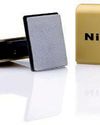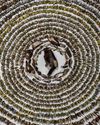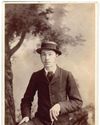
‘I’ve been recognised as an archivist – over the past 50 years, I have documented our life from an Afro Caribbean point of view, which has been left out of the mainstream history,’ says Charlie Phillips, once described by Time Out magazine as the greatest London photographer you’ve never heard of.
Phillips could also be one of the greatest photographers outside of London you’ve never heard of. That is changing. The Charlie Phillips archive funded by the Heritage Lottery Fund began in 2015. The website launched in 2018, marking the culmination of a painstaking and intensive project of restoring, cataloguing, and digitising Phillip’s vast collection of images. It provides a vital insight into some of the expressions of British identity and culture, with a focus on the multicultural character of Notting Hill during the 1960s, ’70s and ’80s.
Charlie Phillips – A Grassroots Legacy, a major new 240x320mm book by Bluecoat Press, was crowdfunded on Kickstarter and reached its target by the campaign deadline in June. The independently published collection promises to deliver on Phillips’ ethos of grassroots art and revolutionary spirit, bringing together highlights of his archive with over 100 tritone printed images.
Born in 1944 in Kingston, Jamaica, Phillips spent his early childhood with his grandparents in St Mary. Leaving them he arrived in England in August 1956 to join his parents who’d left their business employing six workers making tourist souvenirs, migrating to answer the post-war needs of the ‘mother country’.
They settled in London’s Notting Hill, now a gentrified neighbourhood, then regarded as a ghetto populated by Caribbean, Irish and Hungarian immigrants. A place of slum landlords. Race riots were just a few years away. It was unfamiliar and a long way from a childhood playing barefoot in the garden.
This story is from the July 02, 2024 edition of Amateur Photographer.
Start your 7-day Magzter GOLD free trial to access thousands of curated premium stories, and 9,000+ magazines and newspapers.
Already a subscriber ? Sign In
This story is from the July 02, 2024 edition of Amateur Photographer.
Start your 7-day Magzter GOLD free trial to access thousands of curated premium stories, and 9,000+ magazines and newspapers.
Already a subscriber? Sign In

Calling The Shots: A Queer History of Photography
Offering an unprecedented view of photographic history through a queer lens, this is a wonderful and powerful book, says

Large-aperture standard zoom, too
SONY has also revealed a new premium standard zoom, the FE 28-70mm F2 GM.

Super-fast, high-res Sony Alpha Ai II
SONY has announced its new professional full-frame flagship camera, the Alpha A1 II.

39 awesome accessories
Our round-up of the best accessories we've used and reviewed this year, along with some old favourites. There's something here for every budget, starting from just £7, including tripods, bags, filters and much more

Such a thing as society
This autumn sees the launch of a major new book and exhibition devoted to examining the multiplicities of photography during 1980s Britain. Peter Dench finds out more

Join Club
The sociable Canvey Island Photographic Club is keen to grow its in-person meet ups

Capturing flight
Winners and finalists of Bird Photographer of the Year share their tips for success with Hollie Latham Hucker

140 years of change
AP has become the world’s oldest surviving consumer photo magazine because we have moved with the times, says Nigel Atherton

Preserving history in platinum
A deep dive into the meticulous art of platinum printing, and the collaboration between the Royal Geographical Society and Salto Ulbeek. Mike Crawford explores how they brought historical photographs to life with enduring beauty and precision

Life in the past lane
What was life like for an amateur photographer in 1884? John Wade takes a trip back in time